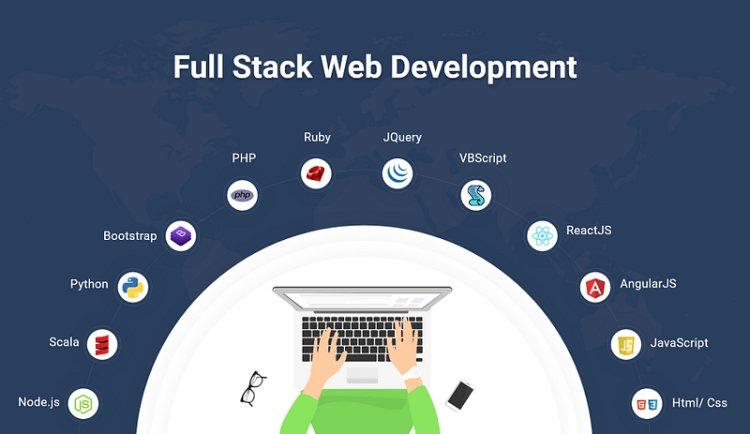If you’re looking to bring your digital product to life with end-to-end expertise, partnering with a Full-Stack Development Company can make a big difference. These companies offer specialized teams that understand both client-side and server-side development, ensuring seamless integration, scalability, and faster go-to-market timelines.
In this blog, we’ll walk you through 7 common mistakes in full-stack development and show you how to avoid them. Whether you’re a developer, tech lead, or business owner working with a full-stack team, this guide will help you avoid setbacks and boost success.
1. Not Planning the Project Architecture Properly
One of the biggest and most frequent mistakes in full-stack development is jumping into coding without proper planning. Some developers rush to start building features, thinking they can figure things out as they go. But this approach can lead to spaghetti code, duplicated logic, and major issues later in the project.
How to Avoid It:
- Start with a solid plan. Create a high-level architecture for your project. Decide on which front-end and back-end frameworks you’ll use, how the app will be structured, and how different parts will interact.
- Use flowcharts and wireframes to visualize the app.
- Separate concerns: Front-end (UI/UX), back-end (APIs, databases), and services (auth, payments) should each be modular and well-defined.
2. Choosing the Wrong Tech Stack
There’s no one-size-fits-all stack. Some developers use the same stack for every project without considering the requirements. For example, using a heavy framework like Angular for a lightweight blog site may not be necessary. Similarly, using a NoSQL database where relational data is involved can be a poor fit.
How to Avoid It:
- Evaluate your project needs: Speed, scalability, team expertise, and future maintenance should influence your tech stack.
- Research the pros and cons of each tool or technology.
- Choose popular and well-documented frameworks like React, Vue.js, Node.js, Django, Laravel, or Express, based on your goals.
3. Ignoring Security Best Practices
Security is often an afterthought for developers who focus only on getting features to work. However, full-stack developers must be mindful of both front-end and back-end security flaws. A small oversight, like not sanitizing user input, can open doors for hackers.
How to Avoid It:
- Use HTTPS everywhere.
- Always validate and sanitize user inputs.
- Implement proper authentication and authorization (JWT, OAuth).
- Protect against SQL Injection, XSS, and CSRF.
- Never store passwords in plain text – use hashing (e.g., bcrypt).
- Keep libraries and dependencies updated.
4. Not Paying Attention to Performance
Full stack apps can easily become slow and unresponsive if performance isn’t taken seriously. Bloated front-ends, inefficient database queries, and poor server configuration can all hurt user experience.
How to Avoid It:
- Minimize and bundle front-end files (CSS, JS) using tools like Webpack or Vite.
- Use lazy loading for images and components.
- Optimize database queries — avoid fetching unnecessary data.
- Implement caching strategies (Redis, browser cache).
- Use pagination or infinite scrolling for large data sets.
- Monitor performance using tools like Lighthouse, New Relic, or Google PageSpeed Insights.
5. Poor Communication Between Front-End and Back-End
In full-stack development, the front-end and back-end need to work together like a well-oiled machine. Problems occur when there’s a lack of coordination, resulting in mismatched API responses, inconsistent data formats, and integration headaches.
How to Avoid It:
- Clearly define API contracts and data structures using OpenAPI or Swagger.
- Agree on HTTP status codes, error messages, and response formats early on.
- Use tools like Postman or Insomnia to test APIs before integration.
- If working in teams, conduct frequent standups or sync meetings to stay aligned.
6. Lack of Testing and Code Reviews
Some developers skip writing tests because they think it’s time-consuming. Others merge code without proper peer reviews. Both are dangerous habits that can lead to broken apps, user complaints, and endless debugging.
How to Avoid It:
- Write unit tests, integration tests, and end-to-end tests using tools like Jest, Mocha, or Cypress.
- Set up automated testing pipelines using CI/CD tools like GitHub Actions or GitLab CI.
- Encourage a culture of code reviews to catch bugs and improve code quality.
- Use linters and formatters (ESLint, Prettier) to maintain consistency.
7. Overcomplicating the Codebase
Full-stack developers often feel the urge to showcase all their knowledge, leading to overly complex solutions for simple problems. While advanced patterns and frameworks have their place, unnecessary complexity can slow down development and confuse team members.
How to Avoid It:
- Keep it simple. Use the KISS principle: Keep It Simple, Stupid.
- Favor readable and maintainable code over clever hacks.
- Use advanced design patterns only when the project requires them.
- Break down code into reusable components and functions.
- Document your logic with clear comments and README files.
Final Thoughts
Full-stack development is a powerful skill that lets you build complete applications on your own or with a team. But to truly excel, you need more than just coding ability — you need awareness, discipline, and planning.
Many businesses turn to professional Software Development Services to access full-stack expertise, streamline development processes, and ensure high-quality results. These services offer tailored solutions that align with specific project goals, whether you’re building a startup MVP or a complex enterprise application.
Full-stack development is a marathon, not a sprint. Learn from your mistakes, stay updated with industry trends, and keep improving your processes. That’s how you build not just apps, but also a reliable and scalable development foundation.




